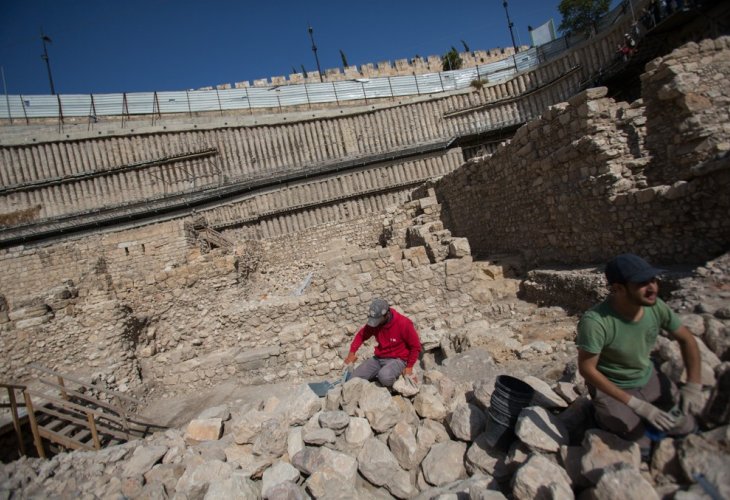A Golden Discovery in Jerusalem: Unearthing Ancient Treasures
A unique pure gold bead, over 1,600 years old, was found along the Pilgrims' Path in the City of David: "It's these personal, everyday items that connect us, so intimately, to individuals from the past."
 (Photo: Shutterstock)
(Photo: Shutterstock)A unique pure gold bead, more than 1,600 years old, was uncovered along the Pilgrims' Path in the City of David. This rare bead was discovered accidentally during the soil sifting project at the Archaeological Experience in the Tzurim Valley National Park.
The bead was discovered while sifting soil extracted from an elaborate Roman structure unearthed during the excavations. Researchers were surprised to find that the bead was made using a unique technique requiring delicate craftsmanship, where dozens of tiny spheres were glued together in a ring shape to create a small bead.
Eighteen-year-old Hallel Feidman from Bnei Ayish, who volunteers in the archaeological sifting project, found the ancient bead. "I dumped the bucket into the sieve and started washing the material that came from the City of David excavations, and then I saw something shiny in the corner of the sieve, something different from what I usually see. The archaeologist confirmed it was a gold bead," Feidman described the accidental discovery.
Dr. Amir Golani, an ancient jewelry expert from the Israel Antiquities Authority, said that in all his years in archaeology, he has found gold only once or twice. "Finding a gold piece of jewelry is very, very special," he said, estimating that the bead was likely just a small part of a necklace or bracelet that included additional beads. "The person who could afford such a gold item was a wealthy individual."
Shlomo Grinberg and Ari Levi, excavation directors on behalf of the Israel Antiquities Authority, reported that "the bead came from an opulent structure at least 25 meters long. The building was constructed in a style characteristic of luxury structures. Other findings within highlight the wealth of its inhabitants, such as imported pottery and a decorative mosaic floor."
According to Grinberg and Levi, it is possible the bead was created in an earlier period than the structure in which it was found, and it's likely the people living there used the bead.
Eli Eskosido, Director of the Israel Antiquities Authority, stated: "While it is a tiny artifact, these personal, everyday items succeed in touching and connecting us more than anything, directly to a specific person. Even with today's technologies, creating such a work is complex. Viewing this object fills us with admiration for the technical abilities of our ancestors in antiquity."
It's worth noting that the presence of gold items in archaeological digs is exceedingly rare. Researchers speculate that the technique likely originated in the Mesopotamian area, known to have existed at least since the mid-3rd millennium BCE, well before the time of the First Temple.
What connects the human body to the Temple?! Rabbi Zamir Cohen reveals:
Amazing Journey - The Path Pilgrims Walked to the Temple. Watch:
The End of Days: Words that Stir Emotions Worldwide. What Are the Signs Indicating the Fulfillment of Biblical Prophecies? When Will It Happen?

